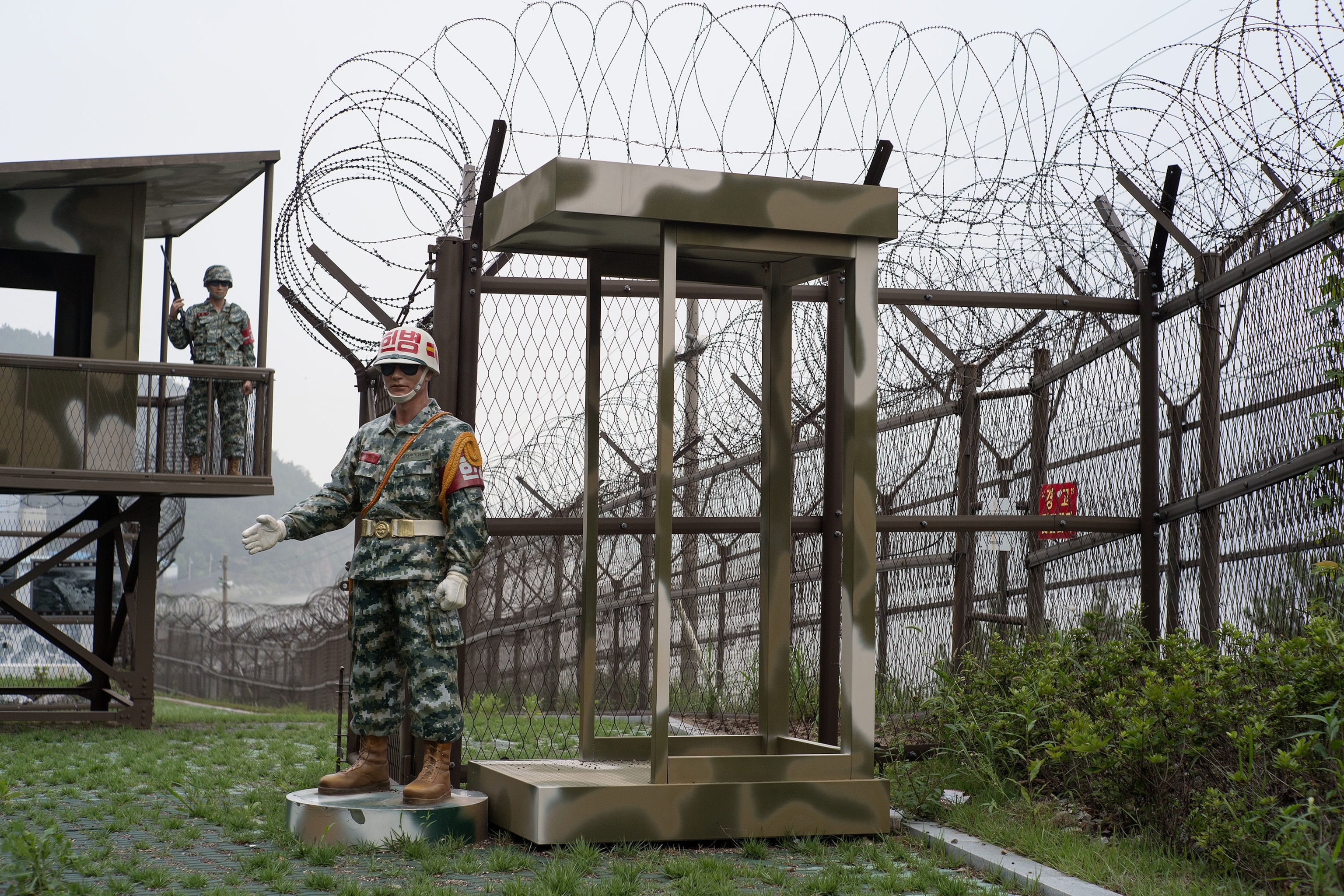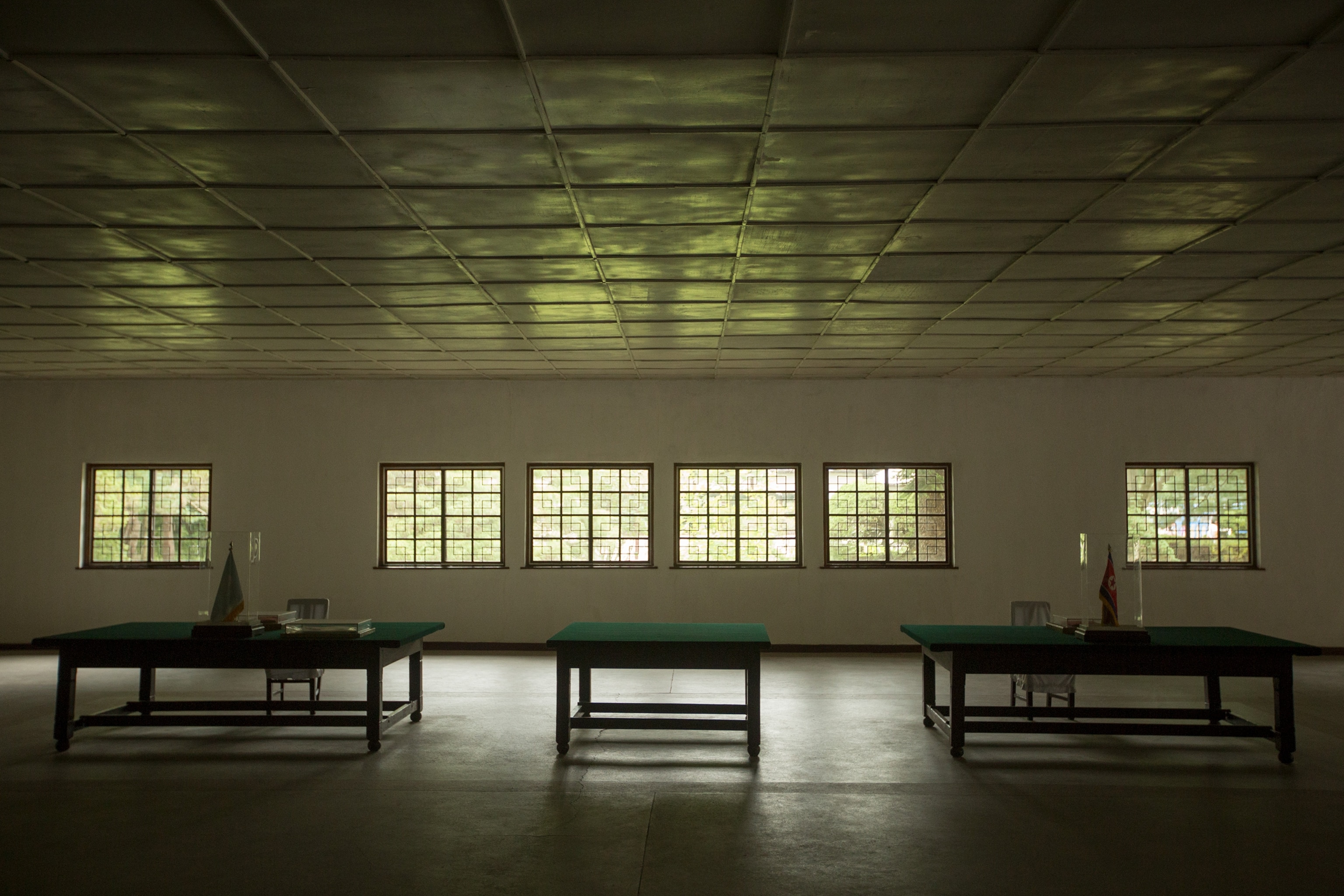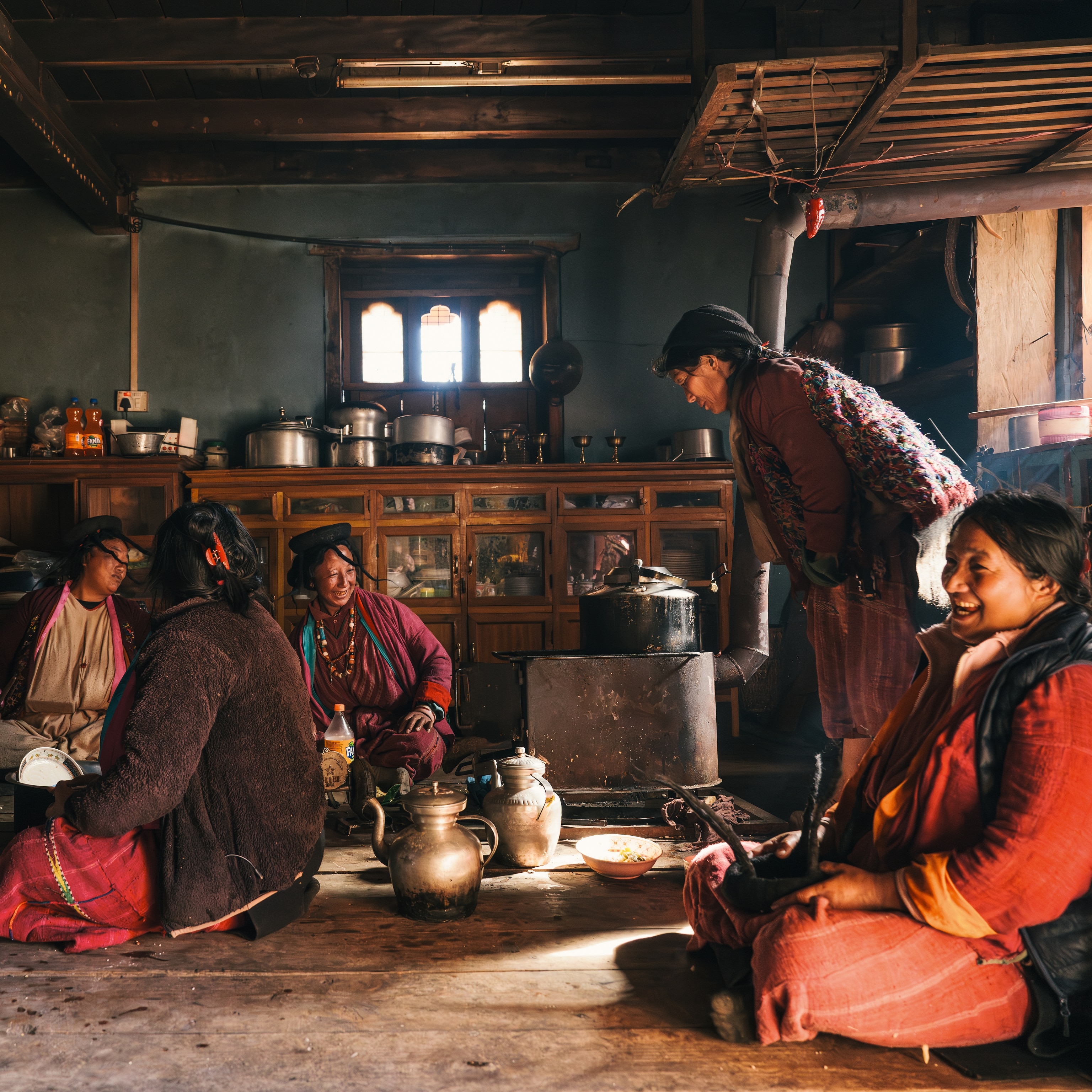
Korea’s Heavily Armed Border Is Packed With Tourists
The DMZ is a living vestige of the Cold War era—it’s also a tourist attraction.
An army of ossifying bodies rests unseen beneath the soil that divides two Koreas. Unwittingly entombed by the tides of war, flesh and bone have faded into the earth and mingled with the roots—their nationalities rendered unrecognizable by the passage of time.
Stretching 150 miles along the 38th parallel, the 2.5-mile-wide Demilitarized Zone (DMZ) was established in 1953 as a buffer zone between the warring communist north and capitalist south. Today, the DMZ proliferates in popular culture as one of the most heavily fortified borders in the world and a living vestige of the Cold War era—it’s also a tourist attraction.
























Though they are now known as two distinct, intensely polarized nations, for more than a thousand years Korea was a unified territory. In 1945, at the conclusion of World War II, the United States and Soviet Union partitioned the peninsula at the 38th parallel with little regard to the sentiments of the Korean people. Arbitrarily divided by ideologically opposed, interloping regimes, tensions between the North and South soon escalated into the three-year Korean War that ravaged the population. On July 27, 1953, the DMZ was established as part of ceasefire negotiated between UN and communist forces. A peace treaty was never signed.
The Other Korea
Tourists have long been fascinated by borders, and Korea's is no exception.
“[They] recognize borderlands as symbolic cultural landscapes loaded with iconic sites and attractions that reflect the public memory,” according to the International Journal of Tourism Research. “This memory is often focused on the past or ongoing wars, or territorial conflicts that have formed the border.”
Tourism can act as a force of peace: a mechanism that promotes empathy and supports reconciliation processes between nations. In addition to fostering cultural exchange, research suggests that countries with open and sustainable tourism industries enjoy higher levels of peace, economic prosperity, and resilience.
But the highly regulated movement of Korean nationals on both sides of the DMZ may limit the peace-building opportunities that are traditionally associated with tourism.



“South Koreans and North Koreans don’t get to go to the other side—it’s only someone like me that can go on both sides and can actually see two perspectives,” says photojournalist David Guttenfelder, who has traveled to North Korea more than 40 times and documented both sides of the DMZ. “The division is more than a physical boundary—it limits imagination and empathy and connection.”
This strict control of the border along with the careful curation of museums and war memorials has allowed each side to write its own version of history unchecked—and its own version of the other Korea.

“Both sides claim the other started the war. Both sides go to great lengths to talk about the monstrous atrocities that the other side committed,” Guttenfelder says. “People use the DMZ to broadcast propaganda, but I think you can easily say the opposite. A lot of people use the DMZ as a positive place, where families go and visit memorials and tie ribbons. It’s become way more than just a border. It’s operating in this very big symbolic way, both good and bad.”
The Accidental Oasis
Six decades of wind and rain have cleansed the gore from the landscape, and sheets of wildflowers bloom where fallen soldiers once lay—remnants of a tragic past, now made beautiful by nature.
Hundreds of thousands of heavily armed soldiers are deployed in the area surrounding the zone, but the interior has remained virtually untouched since the armistice was signed. Forests and mountains decimated by war slowly regenerated in the absence of human hands, forging one of the most unique wildlife preserves on Earth. Some 3,500 plants, mammals, birds, and fish have been identified in the DMZ and Civilian Control Zone (CCZ), including more than 80 endangered and protected species.
The division is more than a physical boundary—it limits imagination and empathy and connection.David Guttenfelder
As North and South Korea continue to vacillate between periods of hostility and hope, some believe the common goal of conservation could foster trans-border movement through ecotourism. In 1998, the Geumgang Mountain Tourism project took nearly two million South Korean tourists to North Korea’s mountains over the course of a decade during an unprecedented period of cooperation.
“There were people who have not heard from or seen their relatives in the north for 50 years. These people took the opportunity to go to North Korea so they were closer to their relatives,” says Walter Keats, president of Asia Pacific Travel. But under the careful watch of the military, most people never interacted with North Koreans, and very few were reunited with family members.
In 2008, a guard shot and killed a South Korean tourist who stepped out of bounds, and the border rapidly went from porous to impermeable within days. Cooperation between the two Koreas has steadily deteriorated ever since. The North Korean nuclear crisis now dominates the international conversation, and tourism initiatives to connect the divided nations have all but ceased to exist.
Tourism as a path to peace

Though interaction between North and South Koreans is negligible and propaganda rife, some believe tourism can still exert a positive influence, particularly within the Hermit Kingdom.
“Because we have no communication whatsoever, it’s very hard for North Korean citizens to have a positive impression of the rest of the world,” Keats says. “All they know is what their government tells them. The vast majority still think that [Americans] started the war and that we’re evil.” Small amounts of exposure to outsiders can have a peace-building effect over the long term, according to Keats.
But those opportunities are also dwindling. As of September 1, 2017, the U.S. State Department restricted travel to North Korea for U.S. citizens. This week, a White House official also announced that President Donald Trump will skip the "cliche" DMZ visit during his November tour of Asia.
“It’s important for people to see this [border]," disagrees Keats. “It’s why you should see Hiroshima, the Holocaust Museum, and Auschwitz—to witness what people do to each other.”
David Guttenfelder is a National Geographic photographer focusing on geopolitical conflict, conservation, and culture. Follow him on Instagram @dguttenfelder.
You May Also Like
Go Further
Animals
- Octopuses have a lot of secrets. Can you guess 8 of them?
- Animals
- Feature
Octopuses have a lot of secrets. Can you guess 8 of them? - This biologist and her rescue dog help protect bears in the AndesThis biologist and her rescue dog help protect bears in the Andes
- An octopus invited this writer into her tank—and her secret worldAn octopus invited this writer into her tank—and her secret world
- Peace-loving bonobos are more aggressive than we thoughtPeace-loving bonobos are more aggressive than we thought
Environment
- Listen to 30 years of climate change transformed into haunting musicListen to 30 years of climate change transformed into haunting music
- This ancient society tried to stop El Niño—with child sacrificeThis ancient society tried to stop El Niño—with child sacrifice
- U.S. plans to clean its drinking water. What does that mean?U.S. plans to clean its drinking water. What does that mean?
- Food systems: supporting the triangle of food security, Video Story
- Paid Content
Food systems: supporting the triangle of food security - Will we ever solve the mystery of the Mima mounds?Will we ever solve the mystery of the Mima mounds?
History & Culture
- Strange clues in a Maya temple reveal a fiery political dramaStrange clues in a Maya temple reveal a fiery political drama
- How technology is revealing secrets in these ancient scrollsHow technology is revealing secrets in these ancient scrolls
- Pilgrimages aren’t just spiritual anymore. They’re a workout.Pilgrimages aren’t just spiritual anymore. They’re a workout.
- This ancient society tried to stop El Niño—with child sacrificeThis ancient society tried to stop El Niño—with child sacrifice
- This ancient cure was just revived in a lab. Does it work?This ancient cure was just revived in a lab. Does it work?
Science
- The unexpected health benefits of Ozempic and MounjaroThe unexpected health benefits of Ozempic and Mounjaro
- Do you have an inner monologue? Here’s what it reveals about you.Do you have an inner monologue? Here’s what it reveals about you.
- Jupiter’s volcanic moon Io has been erupting for billions of yearsJupiter’s volcanic moon Io has been erupting for billions of years
- This 80-foot-long sea monster was the killer whale of its timeThis 80-foot-long sea monster was the killer whale of its time
Travel
- How nanobreweries are shaking up Portland's beer sceneHow nanobreweries are shaking up Portland's beer scene
- How to plan an epic summer trip to a national parkHow to plan an epic summer trip to a national park
- This town is the Alps' first European Capital of CultureThis town is the Alps' first European Capital of Culture
- This royal city lies in the shadow of Kuala LumpurThis royal city lies in the shadow of Kuala Lumpur






